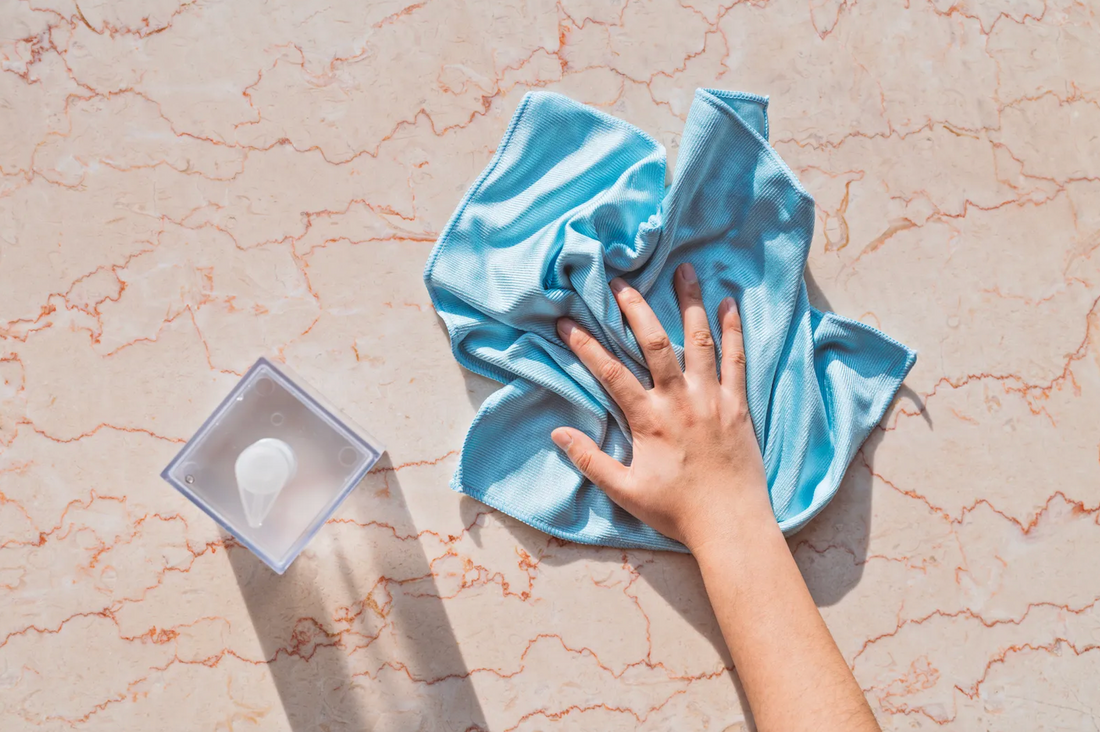Embark on a journey of elegance and preservation with our exploration of marble table top care. In this guide, discover the secrets to maintaining the timeless allure of your stone surfaces, ensuring they remain pristine and captivating for years to come. From understanding how to care for a marble table top to mastering the art of maintaining your dining table, unveil the tips and tricks that elevate the aesthetic and longevity of these exquisite stone features. This comprehensive approach to marble care encompasses everything from daily maintenance to handling potential challenges, providing a holistic guide for preserving the beauty of your cherished marble table top.
What Material Is Marble Produced From?
Marble is primarily produced from limestone, which undergoes a metamorphic process involving high pressure and heat beneath the Earth's surface. The evidence for this lies in the mineral composition of marble, which is mainly composed of recrystallized carbonate minerals like calcite or dolomite. The transformation occurs over geologic time, during which the original sedimentary limestone undergoes profound changes, leading to the distinct characteristics of marble.

Specifically, the recrystallization process eliminates the original textures and fossil structures present in limestone, resulting in the smooth, often intricate, patterns and veining observed in marble. Additionally, the diverse colors and unique markings in different marble varieties are indicative of the various mineral impurities present in the original limestone. This geological evolution gives marble its exquisite aesthetic appeal, making it a sought-after material for a wide range of applications, from architectural marvels to luxurious furnishings like marble table tops.
Properties And Characteristics Of Marble
Color And Veining
Marble, a luxurious and timeless stone, boasts distinctive properties and characteristics that contribute to its allure in high-end dining table collections and contemporary dining room furniture ensembles. Firstly, the color and veining of marble are defining features. Evidence of this can be seen in renowned varieties like Carrara marble, prized for its white or blue-gray hue and intricate veining patterns. The unique geological processes during its formation impart a visual richness that transforms any dining space into an opulent showcase.
Hardness
The hardness of marble stands as a testament to its durability and enduring appeal. Marble ranks relatively high on the Mohs scale of mineral hardness, indicating its resistance to scratches and abrasions. This property ensures that a high-end dining table collection crafted from marble maintains its pristine surface, withstanding the test of time and everyday use.
Luster
Luster is another remarkable characteristic of marble, and its reflective quality adds to the stone's overall elegance. The interplay of light on the polished surface enhances the natural luster of marble, contributing to its luxurious aesthetic. In the context of contemporary dining room furniture collection, this feature becomes a key element, creating an atmosphere of sophistication and refinement.

Density And Porosity
Examining the density and porosity of marble reveals its unique composition. Marble is relatively dense, providing a substantial and substantial feel to high-end dining tables. Additionally, its lower porosity compared to other stones makes it less susceptible to absorbing liquids, a practical consideration in dining settings where spills are inevitable. This property ensures that a marble dining table not only looks exquisite but is also easy to maintain.
Texture
The texture of marble adds a tactile dimension to its appeal. The smooth and cool touch of polished marble surfaces enhances the sensory experience, inviting tactile exploration. This quality contributes to the overall luxurious feel of contemporary dining room furniture collections, making each piece a sensory delight as well as a visual masterpiece.
Durability
Durability is a hallmark of marble that underlines its status as a premium choice for high-end dining table collections. Its resistance to wear, heat, and staining makes it suitable for the rigors of daily use in dining spaces. Marble endures as a resilient and enduring material, ensuring that dining tables crafted from this stone remain as stunning focal points in high-end interiors, embodying both beauty and longevity.
How To Care For Marble Table Top: Do
Apply A Marble Sealant
Begin the care routine by applying a high-quality marble sealant. This protective layer helps guard against stains and minimizes the stone's susceptibility to damage. Evidence of the effectiveness of sealants can be seen in the enhanced resistance of marble surfaces to spills and potential harm.
Blot Up Spills Immediately
Swift action is crucial when spills occur. Blot up any liquid promptly using a clean, soft cloth. This prevents the absorption of liquids into the porous surface of the marble. Immediate attention to spills is a proactive measure in maintaining the pristine appearance of your marble dining table.
Clean Surfaces With Warm Water Or Marble Cleaner
When it comes how to clean marble dining table, use a mild solution of warm water or a specialized marble cleaner. The gentle nature of these cleaning agents ensures effective removal of dirt without causing harm to the delicate surface of the marble. This method is a testament to the care required when choosing cleaning solutions for marble surfaces.
Buff-Dry Surfaces Using A Cotton Cloth Or A Chamois
After cleaning, employ a soft cotton cloth or chamois to thoroughly buff-dry the marble surfaces. This step not only ensures a streak-free shine but also minimizes the risk of water spots. Evidence of the efficacy of this practice is evident in the gleaming finish that accentuates the beauty of your marble dining table.

Put Coasters Under All Drinks; Keep Toiletries In A Tray
Prevention is key in marble dining table care. Placing coasters under all drinks and keeping toiletries in a tray prevents direct contact with potentially staining substances. The use of protective measures underscores a proactive approach to maintaining the pristine appearance of your marble table.
Use Protective Pads Under Heavy Ornaments/Accessories
When adorning your marble dining table with ornaments or accessories, employ protective pads underneath heavy items. This practice prevents scratches and potential damage to the surface, showcasing the importance of preventative measures in marble care.
Use Placemats Under Plates, Stands/Pads Below Hot Dishes
Placemats provide an additional layer of protection against scratches, spills, and heat. Using placemats under plates and employing stands or pads beneath hot dishes exemplify preventative care measures, ensuring the preservation of your marble dining table's beauty over time.

How To Care For Marble Table Top: Don't
Cut Food Directly On A Marble Table Top
One should refrain from cutting food directly on a marble table top. While marble is renowned for its durability, cutting or chopping directly on the surface can lead to scratches and dulling of the knife blades. Evidence of this is visible in fine lines and abrasions that can compromise the flawless appearance of the marble.
Use Acidic Cleaners (Vinegar, Lemon Spray)
Acidic cleaners, such as those containing vinegar or lemon spray, should be avoided when cleaning a marble table top. The acidity in these substances can etch and damage the surface over time. Evidence of the detrimental impact of acidic cleaners is seen in the loss of the marble's polished finish and the development of dull spots.
Apply Abrasive Cleaners, Powders, Or Creams
Abrasive cleaners, powders, or creams should never be used on a marble table top. These substances can cause micro-scratches, compromising the smooth surface and diminishing the marble's lustrous appearance. Evidence of damage from abrasive cleaners manifests as a loss of the stone's natural sheen and the introduction of fine scratches.
Use The Surface As A Worktop For Home Repair Jobs
Avoid using the marble table top as a worktop for home repair jobs or DIY projects. Heavy tools and materials can cause impact damage and scratches, marring the surface permanently. Evidence of such misuse can result in visible signs of wear and tear that compromise the refined aesthetic of the marble.
Sit, Stand, Or Place Heavy Weight On A Marble Table Top
Marble, although sturdy, is not impervious to extreme pressure. One should refrain from sitting, standing, or placing heavy weights directly on a marble table top. The evidence of not adhering to this cautionary advice can manifest in structural damage, cracks, or even breakage of the marble, impacting both its visual appeal and structural integrity.
Conclusion
mastering the art of marble table top care unfolds a symphony of practices that elevate your stone surfaces into timeless masterpieces. From applying sealants to prompt spill cleanup, each tip encapsulates a commitment to preserving the beauty and longevity of marble.
Understanding how to take care of marble dining table and how to clean dining table ensures that every gathering around this exquisite piece is met with enduring sophistication. These styling secrets not only maintain the luster of your marble but also impart a sense of pride in owning and cherishing a luxurious statement piece within your home.





